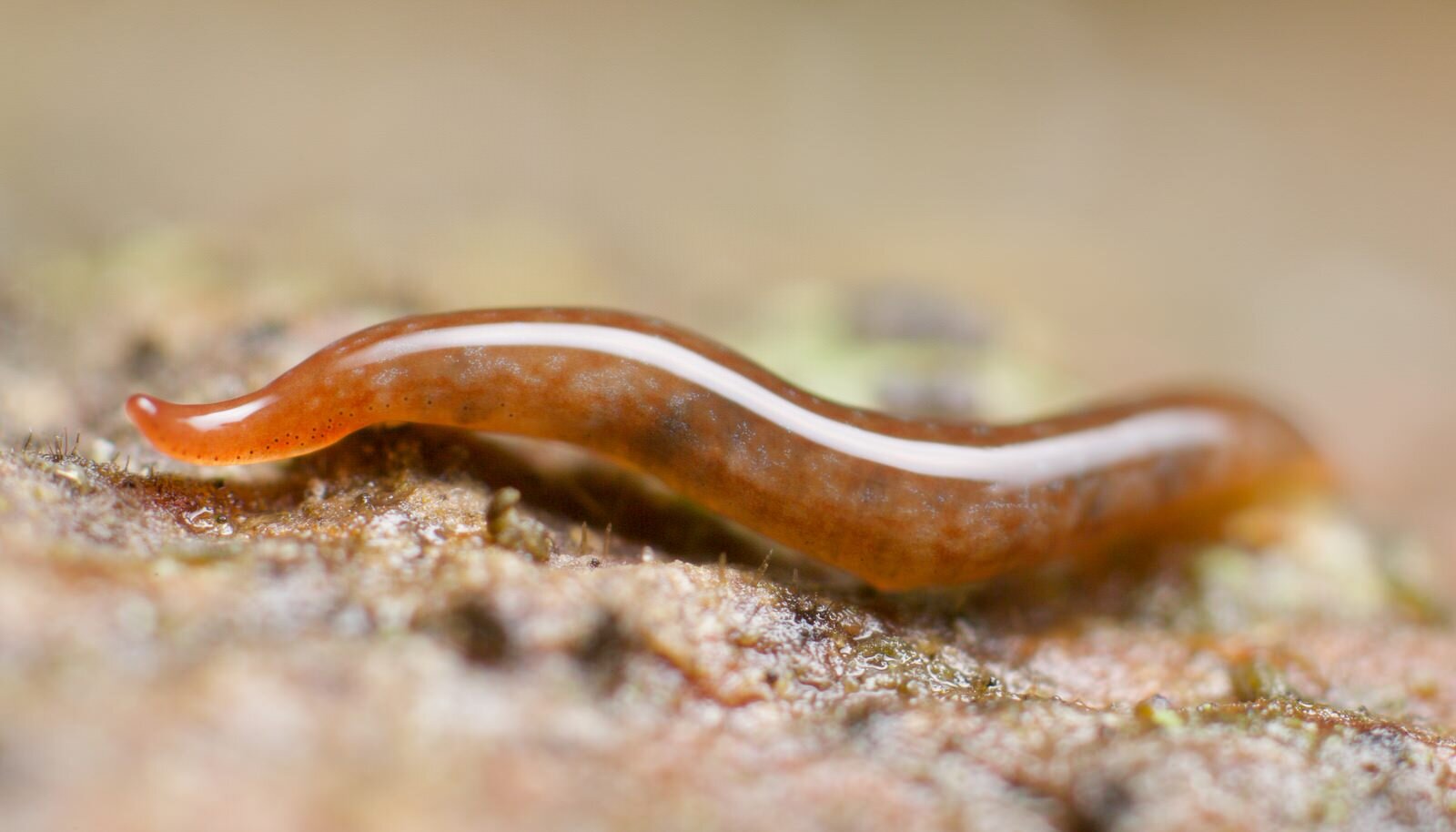
Land planarians, or land flatworms
Land planarians, also known as land flatworms or geoplanarians, are a family of planarians, Geoplanidae, that have become fully terrestrial, free-living in damp soils, leaf litter and under logs around much of the world.
They are members of the Platyhelminthes phylum, loosely containing three classes, consisting of flukes, also known as trematodes, tapeworms, less known as cestodes, and flatworms, or planarians, all uncomfortably collected together at the moment into a subgroup known as Rhabditophora, even though planarians themselves are also confusingly known as platyhelminthes or platyhelminths too. It seems frankly very complicated, confusing and difficult to reach any consensus or definite conclusion about their interrelated status.
They can be as small as 3mm, as large as 15-30mm. Some have the ability to entirely regenerate themselves to such an extent that, like the Sorcerer's Apprentice, only a small section of the body is needed as a template to begin regrowth. Not only that, some can be bisected lengthways or chopped in two midway and turn into two fully functioning animals. Losing a head isn't a problem. They just grow another one.
The pharynx, or eversible feeding tube is situated on the body's underside, halfway down. It also functions as an anus. Because of this they have to fully digest every meal and excrete before eating again.
Some terrestrial species have just two ocelli or eyes, like the snake-headed flatworm, Rynchodemus sylvestris seen below, a sweet-looking and native flatworm from the UK. Others can have an array of hundreds of light-sensitive pigmented dots along their flanks.
Rynchodemus sylvaticus under stone, East Portlemouth S. Devon Set 2016
Rynchodemus sylvaticus under stone, East Portlemouth S. Devon Sept 2016
Unknown land planarian, Compton Dundon, August 2017
Kontikia andersoni under stone, East Portlemouth, Devon UK Sept 2016
Flatworms get their common name for when they are at rest, or disturbed. They dorsally flatten, thicken and contract their length as with the K. andersoni above. The animal below is the same one, stretched back to its full length, moving slowing across the substrate on its mucus slime.
They often have a taste for worms, like the infamous New Zealand flatworm, wreaking its tiny havoc across the gardens of the UK. They can also eat slugs, snails woodlice and insects.
Kontikia andersoni under stone, East Portlemouth, Devon UK Sept 2016
Unknown land planarian, UNAM, Mexico City, Mexico, September 2016
Marionfyfea adventor, Slapton marshes, S Devon, Oct 2016
Marionfyfea adventor is a newly described and rather handsome species found in parts of Europe including the UK. As the only other species of Marionfyfea is found in New Zealand, it’s more than likely that this species also came from there. The paper describing the new species also points out that, due to its widespread range, the flatworm probably came to Europe a long time previously, probably through horticultural imports. Over the years they have spread quickly, in the way that many exotic, introduced species do. Proving the point, the specimen in the photographs above and below were found in the middle of marshland, in Slapton, rural South Devon, UK.
Close up of the many eyes
Certain species of the Bipalium or hammerhead flatworms use the deadly neurotoxin, tetrodotoxin or TTX to immobilise their prey. This makes flatworms the only fully terrestrial animal so far discovered to use it. There is no antidote. Famously, it is the same compound present in Fugu, the Japanese puffer fish delicacy, which kills adventurous Japanese diners every year.
Bipalium species Kyoto, Japan, Nov 2015




